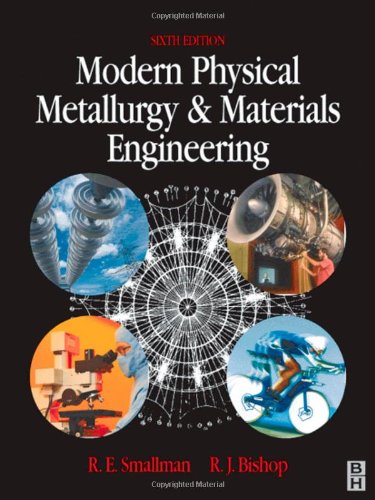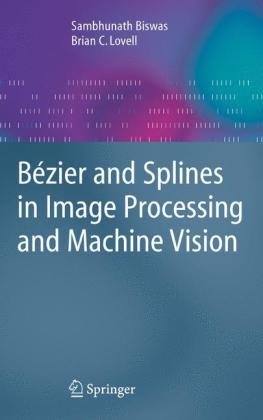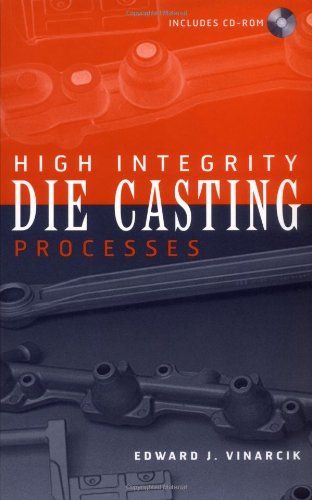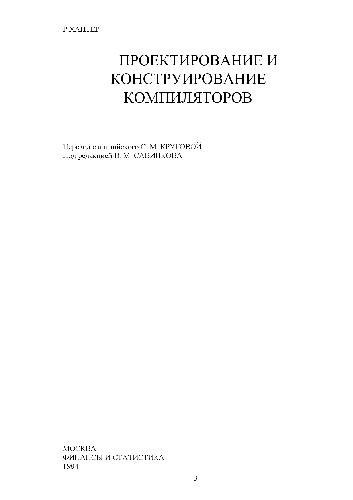R. E. Smallman, R J Bishop9780080511993, 9780750645645, 0750645644
Table of contents :
Front Cover……Page 1
Modern Physical Metallurgy and Materials Engineering: Science, process, applications……Page 4
Copyright Page……Page 5
Contents……Page 6
Preface……Page 11
1.1 The realm of materials science……Page 12
1.2 The free atom……Page 13
1.3 The Periodic Table……Page 15
1.4 Interatomic bonding in materials……Page 18
1.5 Bonding and energy levels……Page 20
2.1 The concept of ordering……Page 22
2.2 Crystal lattices and structures……Page 23
2.3 Crystal directions and planes……Page 24
2.4 Stereographic projection……Page 27
2.5 Selected crystal structures……Page 29
2.6 Inorganic glasses……Page 41
2.7 Polymeric structures……Page 43
3.1 Crystallization from the melt……Page 53
3.2 Principles and applications of phase diagrams……Page 59
3.3 Principles of alloy theory……Page 84
3.4 The mechanism of phase changes……Page 91
4.2 Point defects……Page 95
4.3 Line defects……Page 101
4.4 Planar defects……Page 108
4.5 Volume defects……Page 115
4.6 Defect behaviour in some real materials……Page 116
4.7 Stability of defects……Page 128
5.1 Tools of characterization……Page 136
5.2 Light microscopy……Page 137
5.3 X-ray diffraction analysis……Page 144
5.4 Analytical electron microscopy……Page 153
5.5 Observation of defects……Page 165
5.6 Specialized bombardment techniques……Page 172
5.7 Thermal analysis……Page 175
6.3 Thermal properties……Page 179
6.4 Diffusion……Page 183
6.5 Anelasticity and internal friction……Page 187
6.6 Ordering in alloys……Page 188
6.7 Electrical properties……Page 192
6.8 Magnetic properties……Page 199
6.9 Dielectric materials……Page 204
6.10 Optical properties……Page 206
7.1 Mechanical testing procedures……Page 208
7.2 Elastic deformation……Page 212
7.3 Plastic deformation……Page 214
7.4 Dislocation behaviour during plastic deformation……Page 218
7.5 Mechanical twinning……Page 232
7.6 Strengthening and hardening mechanisms……Page 235
7.7 Macroscopic plasticity……Page 246
7.8 Annealing……Page 248
7.9 Metallic creep……Page 256
7.10 Deformation mechanism maps……Page 262
7.11 Metallic fatigue……Page 263
8.2 Strengthening of non-ferrous alloys by heat-treatment……Page 270
8.3 Strengthening of steels by……Page 285
8.4 Fracture and toughness……Page 295
9.2 Commercial steels……Page 308
9.3 Cast irons……Page 314
9.4 Superalloys……Page 316
9.5 Titanium alloys……Page 319
9.6 Structural intermetallic compounds……Page 323
9.7 Aluminium alloys……Page 327
10.1 Classification of ceramics……Page 331
10.2 General properties of ceramics……Page 332
10.3 Production of ceramic powders……Page 333
10.4 Selected engineering ceramics……Page 334
10.5 Aspects of glass technology……Page 356
10.6 The time-dependency of strength in ceramics and glasses……Page 359
11.1 Utilization of polymeric materials……Page 362
11.2 Behaviour of plastics during processing……Page 366
11.3 Fibre-reinforced composite materials……Page 372
12.2 Metallic corrosion……Page 387
12.3 Surface engineering……Page 398
13.2 Requirements for biomaterials……Page 405
13.3 Dental materials……Page 406
13.4 The structure of bone and bone fractures 397……Page 408
13.5 Replacement joints……Page 409
13.6 Reconstructive surgery……Page 411
13.7 Biomaterials for heart repair……Page 413
13.8 Tissue repair and growth……Page 414
13.10 Ophthalmics……Page 415
13.11 Drug delivery systems……Page 416
14.2 The tradition of using wood……Page 417
14.3 Tennis rackets……Page 418
14.4 Golf clubs……Page 420
14.5 Archery bows and arrows……Page 422
14.6 Bicycles for sport……Page 424
14.7 Fencing foils……Page 426
14.8 Materials for snow sports……Page 427
14.9 Safety helmets……Page 428
1 SI units……Page 431
2 Conversion factors, constants and physical data 422……Page 433
Figure references……Page 435
Index……Page 438







Reviews
There are no reviews yet.